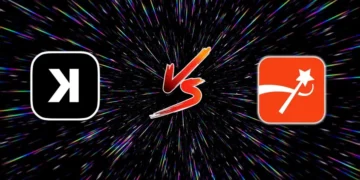How many passwords are necessary to access through your day? If you are similar to the majority of people, you have the login credentials of numerous websites on your hand and at the same time, you pray that your favorite shopping site will not get hacked and reveal your personal information. How would you react if I said that there is an emerging technology that could take away this digital headache permanently?
A recent highly-publicized 16 billion password leak, which was found by Cybernews researchers, makes us fear worst about the way traditional authentication is performed. This is not just another story of data breaches; it is what experts in cybersecurity refer to as “a prototype for widespread exploitation” which in turn gives the criminals an almost unlimited access to personal accounts whereby they can use info-stealers as well as complex phishing campaigns. 94% of the brands have reported identity-related attacks that have caused the compromise of millions of accounts and in the year 2024 only, these accounts have been compromised several times. So, it is obvious from this that our current system is broken at the very core.
Web3 security is one of the potential solutions to the issue of passwords. It is basically an innovative idea that aims at bringing about a change in the way digital identity is handled by the elimination of the use of passwords instead the users are given cryptographic keys that are never taken out of their devices. The idea behind the provision of the technology is not merely hypothetical; a good number of people are already implementing it through apps such as Trust Wallet and Binance Web3 Wallet in a way that the latter securely holds the assets of one without having to memorize intricate passwords. But the question is whether such a new model can be a reality and make passwords obsolete?
By reading this guide, you will be able to learn the methods that Web3 could use to get rid of passwords permanently. Our offline experiences in the usage of Web3 as a means of improving security will be discussed alongside with the online safety you will enjoy in this transition. The guide will clarify your doubts and give you reasonable insight if you are either wondering about the Web3 controversy or questioning will passwords ever going to disappear.
The Fundamental Problem With Password-Based Security
Before we dive into the Web3 solution, let’s be clear about why we need to move beyond passwords in the first place. The issues with traditional authentication systems run deeper than simple inconvenience—they represent a systemic security failure.
Why Passwords Are Security Risks
Human Limitations: The average user maintains dozens of online accounts. Faced with this burden, people understandably resort to password reuse across multiple services. When one service suffers a breach, hackers can use those same credentials to access your other accounts. How many of your accounts share the same or similar passwords?
Phishing Vulnerability: Phishing attacks remain devastatingly effective because they target the human element rather than technological defenses. No matter how strong your password, typing it into a fake login page hands it directly to attackers.
Centralized Targets: Companies store passwords in centralized databases that become prime targets for hackers. We’ve all seen the headlines about major data breaches—these incidents expose millions of user credentials at once.
The Business Impact of Password Problems
The issue with passwords is not only a source of frustration for the users, but it also has a considerable impact on the business costs. Big companies have declared that as many as 30-50% of their IT support tickets are related to password resets. Microsoft, for instance, cut down the costs of authentication by 87% after they switched to passwordless methods. These statistics uncover a system that is inefficiently consuming the company’s resources, which could be saved and used in other more productive ways.
What exactly Is Web3 Identity?
If passwords are the problem, Web3 identity is the promising solution emerging from blockchain technology. But what does this term actually mean?
Core Components of Web3 Identity
Web3 identity—often called decentralized identity or self-sovereign identity—represents a fundamental shift in how we manage digital identity. Instead of your login credentials being owned by platforms like Google or Facebook, Web3 identity puts you in full control through several key components:
Decentralized Identifiers (DIDs): These are unique, user-controlled identifiers anchored on a blockchain. Unlike email addresses, you own your DIDs—no company can revoke or control them.
Verifiable Credentials (VCs): Think of these as digital versions of physical credentials like driver’s licenses or diplomas. They’re cryptographically signed statements that are tamper-proof and instantly verifiable.
Cryptographic Keys: Your private keys replace passwords as the proof of ownership for your identity. These mathematical keys are vastly more secure than any password you could memorize.
Digital Wallets: These applications store your keys and credentials securely on your device, putting you in control of your digital identity assets.
The Philosophy Behind Self-Sovereign Identity
This approach represents more than just technical innovation—it’s a philosophical shift toward user control and digital autonomy. With self-sovereign identity, you choose what information to share, with whom, and for how long. This stands in stark contrast to the current model where platforms harvest and control your personal data.
How Web3 Identity Actually Replaces Passwords
Now for the practical question: how does this actually work when you want to log into a website or application?
The Passwordless Login Flow
Initiation: Instead of seeing username and password fields, you encounter a QR code or “Sign in with Web3” button.
Authentication Request: The website sends a cryptographic challenge to your digital wallet.
User Consent: You review what information the service is requesting and approve the transaction.
Digital Signature: Your wallet uses your private key to create a digital signature for the challenge—this happens securely on your device.
Verification: The service verifies your signature using your public key, confirming your identity without ever touching a password.
This entire process typically takes seconds and provides far stronger security than password-based authentication.
Advanced Cryptographic Protections
Beyond basic signatures, Web3 identity systems incorporate advanced privacy-preserving technologies:
Zero-Knowledge Proofs (ZKPs): These allow you to prove you’re over 18 without revealing your birth date, or prove you have an account without revealing which one. This technology enables what’s called selective disclosure—sharing only the minimum information necessary.
Phishing Resistance: With no passwords to type, fake websites have nothing to steal. Even if you visit a phishing site, the worst you might do is sign a transaction that could be verified as illegitimate by your wallet.
Understanding Web3 Security: Beyond the Password Paradigm
What Makes Web3 Security Different?
Generally, online security is based on a model called “share-secret”, where you prove who you are by giving information that only you should know – your password. The main problem? You have to provide this secret to the website you are logging into, thus creating huge data pools that attract hackers like bees to nectar.
Web3 security reverses this model totally by using asymmetric cryptography and self-custody. Rather than having your digital identity stored on company servers, Web3 security lets you be in charge entirely via a non-custodial wallet. If you are using Apps like Trust Wallet, your private keys – the cryptographic equivalent of passwords – are created and kept only on your device. Thus, there is no central database that hackers can target, no password reset forms that can be exploited, and no customer service representatives who may be socially engineered.
Such changes are staggering: Where have those 16 billion passwords that got leaked? Precisely through the weaknesses that Web3 security is trying to fix – centralized databases, human factor, and the inherently insecure share-secret model.
The Building Blocks of Web3 Authentication
To understand how Web3 could end passwords forever, we need to examine its core components:
Private Keys: These are randomly generated strings of characters that mathematically control access to your digital assets and identity. In a proper Web3 security implementation, your private key never leaves your device.
Public Keys and Addresses: Derived from your private key, these function like your username or account number—they can be safely shared with others to receive transactions or verify your identity.
Seed Phrases: Typically 12 or 24-word sequences that can regenerate all your private keys if you lose your device. This is perhaps the most challenging aspect for new users, which is why some wallets like Binance Web3 Wallet are exploring seedless approaches using Multi-Party Computation (MPC) .
Smart Contracts: Self-executing code on blockchains that can enable advanced authentication logic, such as requiring multiple approvals for sensitive operations or implementing time-based access controls.
When you combine these elements, you get an authentication system that’s fundamentally more secure than passwords—but is it ready for mainstream adoption?
Web3 Identity vs. Other Passwordless Solutions
You might be wondering how Web3 identity differs from other passwordless authentication methods you’ve encountered, like magic links or biometric sign-ins.
Comparison of Passwordless Technologies
| Method | Security Model | User Control | Interoperability |
|---|---|---|---|
| Web3 Identity | Decentralized/Blockchain | Full user sovereignty | High (theoretically) |
| Passkeys (FIDO2) | Centralized reliance | Limited to ecosystem | Moderate |
| Magic Links | Email-dependent | Minimal | Low |
| Biometric Authentication | Device-dependent | Varies by provider | Low |
While solutions like passkeys represent improvements over passwords, they often still rely on centralized providers. Web3 identity stands apart by eliminating central authorities entirely from the identity equation.
Complementing Multi-Factor Authentication
One should also note that Web3 identity doesn’t essentially get rid of the idea of multi-factor authentication; instead, it changes the way it works. The factors are just another way: a device to have (your wallet), a characteristic to be (biometrics for unlocking your wallet), and a secret to know (a PIN for your wallet, maybe). The main distinction is that your factors are not shared with or saved by the services that you use.
Real-World Implementation Examples
The theory sounds promising, but is Web3 identity actually being used today? The answer is a resounding yes across multiple sectors.
Decentralized KYC Processes
Traditional KYC (Know Your Customer) checks require repeated identity verification every time a new service is availed. Using Web3 identity, the user can do the verification only once and then can use the verifiable credentials for different platforms. Togggle and Velvosoft are two projects that are already enabling these decentralized KYC solutions for DeFi and NFT marketplaces.
Just think of it as verifying your identity only once with a financial institution and then being allowed to use that same verified credential at the hospital, gaming platform, or any other service without the need to repeat the process. This is what decentralized KYC is all about – less friction, but still, compliance is being met.
Enterprise Adoption
Major companies are already embracing related technologies. Microsoft’s Entra Verified ID service is moving toward decentralized identity for enterprise logins. Estonia’s national digital ID system demonstrates that large-scale passwordless authentication is practically achievable today.
Consumer Applications
In the consumer space, the growth of crypto wallets has created a natural onboarding path for Web3 identity. While currently used primarily for managing digital assets, these wallets are increasingly functioning as identity managers. The infrastructure supporting Web3 identity is already in millions of pockets worldwide.
Challenges and Barriers to Adoption
Despite its promise, the transition to a passwordless future powered by Web3 identity faces significant hurdles that must be addressed for mainstream adoption.
Key Management and User Experience
The most immediate challenge is private key management. Unlike passwords, which can be reset, losing your private keys could mean permanently losing access to your digital identity. This creates what’s often called the “key recovery problem.”
Solutions are emerging, including:
Social recovery systems where trusted contacts can help restore access
Hierarchical deterministic wallets that derive multiple keys from a single seed phrase
Multi-signature arrangements requiring multiple keys for sensitive operations
Interoperability and Standards
Web3 identity different systems need to work together seamlessly to deliver its value. At present, interoperability is a challenge due to the absence of universally adopted standards for decentralized identifiers and verifiable credentials.
Such standard-setting organizations as the World Wide Web Consortium (W3C) and the Decentralized Identity Foundation are trying to create these standards, but the spreading of the standards is still at the initial stage.
Regulatory Uncertainty and Adoption Barriers
Governments and financial institutions are in the process of deciding the classification and regulation of decentralized identity models. This regulatory uncertainty situation leads to the implementation pace that is very low or even frozen in such sectors as finance and healthcare that are highly regulated.
Besides that, big companies may be reluctant to give up the control of user identity, thus, a friction for adoption will arise. The enabler for achieving that would be to show the business value that is far beyond just security improvement.
The Password Crisis: Why Our Current System Is Failing
Understanding the Scale of the Problem
The numbers related to password security are terrible. According to the data, more than 60% of Americans have the same password for different accounts, and only 6% of passwords are really unique. The simplest passwords still hold the crown, with “1234” being part of over 700 million passwords, while the words “password” and “admin” were used by 56 million and 53 million users respectively.
These feeble credentials become a hacker’s playground, particularly if you take into account that phishing is the cause of 50% of all cyberattacks. The recently uncovered 16 billion leaked passwords is just the latest episode in this long security disaster.
The Human Factor: Why We Can’t Fix Passwords
The problem with passwords isn’t just technical—it’s psychological. Our brains aren’t wired to create and remember dozens of complex, unique strings of characters. When faced with this cognitive overload, we resort to predictable patterns:
Password Recycling: Using the same password across multiple sites
Simple Variations: Slight modifications of previous passwords (Password1, Password2, etc.)
Personal References: Using names, birthdays, and other personally identifiable information
Common Phrases: Relying on pop culture references, positive concepts (“love” appears in 87 million passwords), or even spiritual terms (24 million users believe “God” will make their password secure)
No amount of user education seems to solve this problem because we’re fighting against fundamental human limitations. This is precisely why the promise of Web3 security is so compelling—it removes the burden of human memory from the security equation.
Web3 Authentication in Action: How Trust Wallet and Binance Are Leading the Way
Trust Wallet: A Glimpse Into a Password-Free Future
Trust Wallet, a top non-custodial wallet among users worldwide, is a fairly simple example leading to comprehension of how Web3 Security works in reality. After you install Trust Wallet on your iPhone or any other device, the app will create your wallet details right there on your gadget.
In a different way from common banking apps, Trust Wallet will not ask you to make an account using an email and password. In exchange, you will be provided with a secret recovery phrase that you have to keep extremely safe – this phrase turns into your ultimate key for getting back your wallet if you happen to lose your device or it gets broken.
The main difference? Trust Wallet never obtains your private keys or recovery phrase. Their Terms of Service, as an example, say it very clearly: “We do not get or store your wallet password, encrypted private key, unencrypted private key, or secret phrase related to your wallet”. With this kind of architecture, the risk of large-scale data breaches that have been the downfall of traditional authentication systems is removed.
Navigating Challenges: Trust Wallet Restrictions and Alerts
The web3 security ecosystem, just like any other technology that is still relatively new, is experiencing some issues that have to be resolved slowly. Users sometimes see Trust Wallet warnings about risks, and there are some Trust Wallet limited countries where full sanctions make it impossible to access some services.
Not long ago, users that had some assets were shown a Trust Wallet Critical Risk Alert informing them that BEP2 and BEP8 tokens on the BNB Beacon Chain would be deprecated. Even though this caused some problems for a short period, the Trust Wallet team reacted by launching a recovery tool via their browser extension only—thus, the Web3 security model is able to adjust to changes in the ecosystem while still giving users the freedom to control themselves.
If you have to send money on Trust Wallet, the action supports the passwordless system that is normally used: all you need is to confirm the operation by using biometric authentication or PIN on your device—no password is required. This is a real-life example of how Web3 may eventually result in the complete disappearance of passwords for everyday financial transactions.
Binance Web3 Wallet: Innovations in User Experience
The Binance Web3 Wallet offers another fascinating case study in Web3 security evolution. Rather than relying on traditional seed phrases, it uses Multi-Party Computation (MPC) to split private keys into three shares :
One share held by Binance
One share stored on your device
One share backed up to your cloud storage, encrypted with your recovery password
This approach eliminates the need for users to manage a seed phrase while maintaining the core benefits of Web3 security. To access your wallet, you need at least two of the three shares, meaning neither Binance nor a cloud hacker alone can compromise your funds .
This innovation addresses one of the major usability hurdles in Web3 security—key management—while preserving the fundamental advantage over passwords: your authentication credentials never exist in a single location that hackers can target.
The Road to Mainstream Adoption: Challenges and Controversies
Addressing the Skeptics: Why Will Web3 Fail?
As with any disruptive technology, Web3 security faces significant skepticism. Critics raise valid concerns about why Web3 will fail, pointing to issues like:
Technical Complexity: The learning curve for managing private keys and understanding blockchain transactions remains steep for average users.
Irreversible Mistakes: Unlike password reset systems, transactions on the blockchain are permanent. If you send funds to the wrong address or lose your private keys, there’s no customer service to call.
Regulatory Uncertainty: The absence of centralized control—a core feature of Web3 security—creates challenges for law enforcement and consumer protection.
Concentration of Power: Despite decentralization ideals, critics note that “a large part of the blockchain industry is controlled by vulture capitalists and silicon valley insiders” .
Understanding what is the controversy with Web3 requires acknowledging these legitimate concerns while recognizing that the technology is still evolving. The same questions were once asked about early internet technologies that later became ubiquitous.
The Integration Challenge: Bridging Web2 and Web3
For Web3 security to truly replace passwords, it needs to integrate seamlessly with existing online experiences. This transition is already underway through several approaches:
WalletConnect Protocol: Allows Web3 wallets like Trust Wallet to interact with decentralized applications (dApps) through QR code scanning—no passwords required.
Web3 Auth Services: Services like Web3Auth use threshold cryptography to create familiar social login experiences while maintaining non-custodial security.
Progressive Enhancement: Many applications are offering Web3 security as an optional login method alongside traditional passwords, allowing users to transition at their own pace.
The question isn’t whether Web3 security will completely replace passwords overnight, but whether it can provide a viable alternative that gradually gains market share as users recognize its advantages.
Practical Guide: Embracing Web3 Security Today
How to Install Trust Wallet on iPhone and Android
Ready to experience password-free authentication firsthand? Here’s how to get started:
Download the App: Search for “Trust Wallet” in the Apple App Store or Google Play Store, or visit trustwallet.com/download directly .
Create Your Wallet: After installation, tap “Create a New Wallet.” The app will generate your private keys locally on your device.
Backup Your Recovery Phrase: Write down the 12-word seed phrase in the exact order shown and store it somewhere secure—never digitally! This is the most critical step for protecting your wallet.
Enable Additional Security: Activate biometric authentication (Face ID or fingerprint) in the wallet settings for convenient, secure access.
Remember: There’s no Trust Wallet code for special access—the application is designed to be completely self-sufficient once installed.
How to Send Money on Trust Wallet: A Password-Free Transaction
Once your wallet is set up, experiencing password-free transactions is straightforward:
Open Trust Wallet and unlock using your biometric authentication.
Select the cryptocurrency you want to send.
Tap “Send” and enter the recipient’s wallet address.
Review transaction details including network fees.
Confirm the transaction using your biometric authentication.
The entire process happens without a single password—just cryptographic verification that you control the private key associated with your wallet address.
Maximizing Your Web3 Security
As you explore this new paradigm, keep these best practices in mind:
Diversify Your Holdings: Consider using multiple wallets for different purposes—much like you might use different passwords for social media versus banking.
Verify Everything: Double-check addresses before sending transactions, as blockchain transactions are irreversible.
Stay Informed: Follow official channels for any Trust Wallet alerts or important updates about supported networks and assets.
Keep Software Updated: Regular updates often include important security enhancements.
The Future of Authentication: Where Do We Go From Here?
The Gradual Transition to Password-Free Experiences
The shift away from passwords won’t happen overnight, but the building blocks are already in place. We’re likely to see a gradual transition where:
Password Alternatives Gain Traction: Technologies like passkeys and Web3 security will become more common as optional login methods.
Hybrid Approaches Emerge: Applications will support multiple authentication methods during the transition period.
Critical Mass Triggers Tipping Point: As more users adopt these technologies, network effects will accelerate the decline of passwords.
Password Use Becomes Niche: Eventually, passwords may persist only in legacy systems or specific use cases, much like fax machines today.
The FIDO Alliance’s push for universal passkey adoption represents a complementary approach to Web3 security—both aim to replace passwords with more secure cryptographic authentication .
Overcoming the Remaining Hurdles
For Web3 security to fulfill its potential, several challenges need addressing:
User Experience Improvements: Tools like Binance Web3 Wallet’s MPC approach show promising directions for simplifying key management.
Education and Onboarding: Better resources are needed to help users understand and comfortably use these new security paradigms.
Interoperability Standards: Common standards will ensure that Web3 security solutions work seamlessly across different platforms and applications.
Recovery Solutions: Innovations in social recovery and inheritance models will address the legitimate concerns about irreversible account loss.
Getting Started with Your Web3 Passport: The Crypto Wallet
Your journey into the passwordless future begins with a crypto wallet. These wallets, like Trust Wallet or the Web3 security Binance wallet, are your gateway to this new digital world. They are software programs designed to manage your cryptographic keys and interact with decentralized applications.
How to Install Trust Wallet on iPhone
Getting set up is easier than you might think. For many, a mobile wallet is the most convenient starting point. Here’s a quick guide on how to install Trust Wallet on iPhone:
Download from the App Store: Open the App Store on your device and search for “Trust Wallet”. To avoid fake apps, always verify that the publisher is “Six Days LLC”.
Create a New Wallet: Once installed, open the app and select “Create a New Wallet.”
Secure Your Recovery Phrase: This is the most critical step. The app will generate a 12 or 24-word recovery phrase. This phrase is the master backup for your entire wallet. Write it down on a piece of paper and store it in a secure, offline location. Never share it with anyone or store it digitally (like in a screenshot or text file).
Confirm Your Phrase: The app will ask you to re-enter the words in the correct order to ensure you’ve saved them correctly.
You’re Ready: With that, your wallet is created. You now have a secure, self-custodied digital identity.
What is the “Trust Wallet Code”?
Sometimes when people talk about a Trust Wallet code, they mean the Secret Recovery Phrase (a seed phrase) most times. It’s definitely not a password that you come up with. The wallet generates a unique code that is the only way to access the money and the user anonymously. If you lose it, you lose access to your wallet forever. A person who has this phrase is the one who can make all the decisions with your wallet. So, make sure that you don’t lose it.
Navigating Web3: Security and Practical Use
While Web3 offers a more secure foundation, it’s not a utopia. The responsibility for security shifts from corporations to you, the user. This requires a new level of awareness.
Understanding Blockchain Networks: The BEP2 Example
Crypto is not one thing, it is different blockchain networks that constitute the world of crypto. And each of them has its own sets of rules and different ways to interact with them. What it actually signifies, taking the example of the BNB Chain ecosystem, is that initially it was two main token standards: BEP2 and BEP20.
With a recent decision, the BNB Beacon Chain (which was using the Trust Wallet BEP2 standard) is no longer available and a more versatile BNB Smart Chain (BEP20) has come to carry out its functions. Therefore, to put it simply, any user who has a wallet with an old BEP2 token should first convert their wallet to a BEP20 one and only then transfer the tokens. Trust Wallet has some instructions ready to facilitate the users through the steps, but it is also worth noting that this is just one of many facets of Web3 which are constantly changing if you want to be able to work in the environment smoothly. The termination of BEP2 is an instance of how the industry is always transforming.
Practical Wallet Use: Sending and Receiving Funds
Once your wallet is set up, you’ll want to know how to use it. For instance, how to send money on Trust Wallet is a straightforward process:
Open Trust Wallet and tap the “Send” button.
Select the Asset you wish to send (e.g., BNB, ETH, or USDT).
Enter the Recipient’s Address and the amount. You can paste the address or scan a QR code. Always double-check the address is correct, as blockchain transactions are irreversible.
Review and Confirm the transaction details, including the network fee (or “gas fee”).
Tap “Confirm” to broadcast the transaction to the network.
Receiving funds is even simpler: tap the “Receive” button, select the asset, and share your public address or QR code with the sender.
Global Access and Its Limitations
Web3 wants to be a global, borderless internet, but it is still affected by regulations of the physical world. Certain services and platforms have limitations as to in which countries they can operate. For instance, while the Trust Wallet is generally available to everyone, there might be some restrictions on the on-ramps and off-ramps (services that allow you to buy or sell crypto with fiat money) in certain areas. The same goes for exchanges, so users are looking for terms like Trust Wallet restricted countries to find out whether they can have access to the full range of services. This is a major hurdle that Web3 is facing on its way to achieving mass adoption.
The Future Outlook: When Will Passwords Actually Disappear?
Given these challenges, what’s a realistic timeline for the passwordless future?
Short-Term Projections (2025-2027)
In the immediate future, we’ll likely see continued growth in hybrid approaches. Technologies like passkeys will bridge the gap while Web3 identity infrastructure matures. Notably, it’s projected that at least 25% of the world’s top 1,000 websites will support passkeys by the end of 2025.
During this period, Web3 identity will likely gain traction in specific verticals where it offers immediate advantages:
Decentralized finance (DeFi) for seamless yet compliant access
Gaming and virtual worlds where digital asset ownership is key
Supply chain and credential verification for businesses
Long-Term Vision (2028 and Beyond)
Looking further ahead, we may see the emergence of what some call the “identity stack”—layered approaches that combine Web3 identity with other authentication methods appropriate to different risk levels.
The role of artificial intelligence in identity systems will also grow. AI can analyze behavioral patterns for continuous authentication, potentially working alongside Web3 identity for comprehensive security.
The Role of Industry Alliances
Organizations like the FIDO Alliance are crucial to this transition. By developing and promoting authentication standards, they create the foundation for interoperable passwordless authentication. Major tech companies including Google, Apple, and Microsoft are already backing these standards, signaling industry-wide commitment to moving beyond passwords
Conclusion
It’s pretty clear from the evidence: the way we rely on passwords has led to a cybersecurity crisis that can’t be fixed by small changes. One of the latest staggering examples is the 16 billion password leak that happened recently. In the meantime, Web3 security is a tested way out of this mess which, when adopted, will not only remove but also avoid the most vulnerable points of the conventional authentication system.
While reasons for “why Web3 will fail” or “what is the controversy with Web3” being serious topics for debate, the fact on the ground is that millions of users are already performing password-free transactions through wallets like Trust Wallet and Binance Web3 Wallet daily. The tech is sound, the security model is better, and the user experience keeps on getting better gradually.
It won’t happen overnight, but the way forward is obvious. Just as we went from horse-drawn carriages to cars and from landlines to smartphones, a similar change is coming in digital identity and authentication.
Next time when you are scratching your head trying to remember if you capitalized a letter or used a special character in your password, maybe you should think: isn’t it time for something better? A passwordless future is not far off; it’s already happening with the Web3 security solutions that are changing the way we control our digital lives.
Frequently Asked Questions (FAQs)
What happens if I lose my private keys in a Web3 identity system?
Unlike passwords, private keys cannot be reset, which is why proper backup procedures are crucial. Most modern systems use seed phrases—typically 12-24 words—that can regenerate your keys if lost. Social recovery systems, where trusted contacts can help restore access, are also becoming more common. The key is treating your recovery phrase with the same seriousness you would treat the deed to your house.
How is Web3 identity different from just using passkeys?
While both represent improvements over passwords, passkeys typically still rely on device manufacturers or platforms as intermediaries. Web3 identity takes this further by eliminating central authorities entirely. With Web3 identity, you control your identity completely rather than having it managed through Apple, Google, or Microsoft ecosystems.
Can Web3 identity work for people who aren’t technical?
This is a crucial challenge that the industry is actively addressing. The goal is to create abstracted experiences where users don’t need to understand the underlying cryptography—similar to how most people use HTTPS secured websites without understanding encryption. Improved wallet designs, better onboarding flows, and educational resources are all helping make Web3 identity accessible to non-technical users.
Is my personal information stored on the blockchain with Web3 identity?
Typically, no. Most Web3 identity systems store only minimal information on-chain—usually just your decentralized identifier and the public keys associated with it. Your actual personal data remains encrypted on your devices or in storage you control. When you share information, you’re sharing verifiable credentials rather than allowing access to a central database.
How can businesses prepare for the transition to Web3 identity?
Start by educating your team about decentralized identity concepts. Experiment with pilot projects that implement passwordless authentication—even starting with traditional passkeys builds relevant experience. Monitor standards development through organizations like the W3C and Decentralized Identity Foundation. Most importantly, begin considering how your customer identity and access management systems might evolve to support these new paradigms.
Why will web3 fail?
Critics argue Web3 will fail due to several fundamental challenges: the technology remains too complex for mainstream users, there are significant scalability issues with blockchain networks, regulatory uncertainty creates business risks, and despite decentralization ideals, power appears concentrated among venture capitalists and insiders . Additionally, the environmental concerns around energy-intensive consensus mechanisms and the volatility of cryptocurrency markets create additional headwinds for adoption. However, proponents believe these are growing pains rather than fatal flaws, pointing to rapid innovation in scaling solutions and user experience improvements.
How did the 16 billion passwords get leaked?
The 16 billion passwords were leaked through a combination of infostealers, data breaches, and credential harvesting campaigns discovered by Cybernews researchers . This massive compilation didn’t come from a single source but was aggregated from multiple breaches over years, with cybercriminals using specialized malware called “infostealers” to harvest login credentials from compromised devices. The scope is particularly dangerous because it enables “credential stuffing” attacks where hackers use the same username/password combinations across multiple services, taking advantage of the fact that most people reuse passwords.
Will passwords ever go away?
While passwords will eventually go away as a primary authentication method, this transition will be gradual rather than abrupt. The FIDO Alliance is pushing for universal passkey adoption, and major companies like Microsoft have made passkeys mandatory for new accounts . The shift will likely follow a pattern where passwords remain as a fallback option before eventually being phased out entirely. However, complete elimination faces hurdles including legacy system support, user familiarity, and the need for robust recovery mechanisms for passwordless systems.
What is the controversy with web3?
The controversy with Web3 centers on several key issues: the “decentralization illusion” where despite claims of democratization, control often remains concentrated with founders and early investors; significant environmental concerns around energy-intensive proof-of-work blockchains; the tension between privacy and accountability where anonymity can enable illicit activities; and questions about whether the technology delivers tangible benefits for mainstream applications beyond speculation . Additionally, there are ongoing debates about whether Web3 truly represents a paradigm shift or merely rebrands existing technologies with cryptocurrency elements.





































